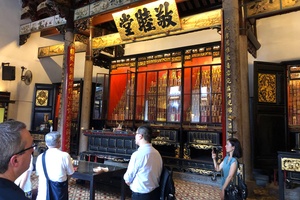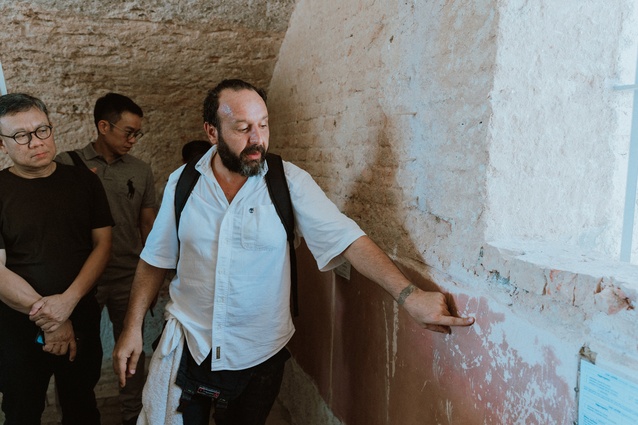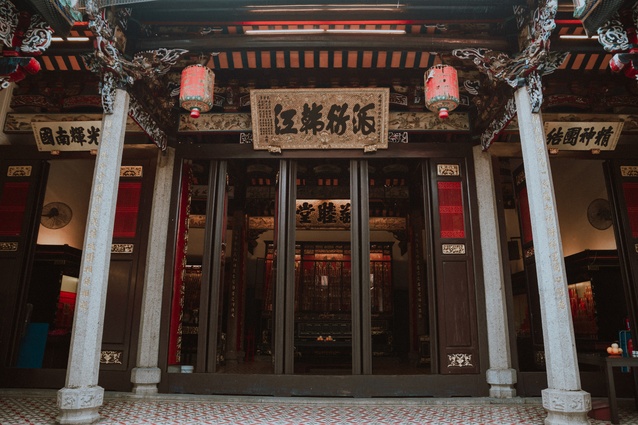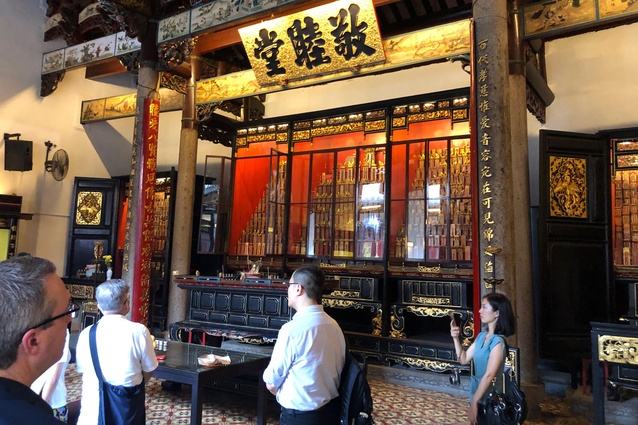Cultural intangibles: UNESCO Asia-Pacific Awards for Cultural Heritage Conservation
Andrew Irving from Irving Smith Architects reports on last year's UNESCO Asia-Pacific Awards for Cultural Heritage Conservation, which honoured two New Zealand projects in 2019, and the accompanying Heritage Forum.
With some trepidation, I found myself in Penang for the UNESCO Asia-Pacific Awards for Cultural Heritage Conservation. The event was held in conjunction with a Heritage Forum, celebrating the 20th anniversary of the establishment of this awards programme.
Attending in the absence of Ian Bowman, our Heritage Consultant, who had optimistically encouraged us to enter this far-reaching awards programme, I encountered architects and projects from an area bordered by New Zealand in the east and Jordan in the west. I expected high humidity and troublingly intense presentations on heritage mouldings and the merits of lime plaster.

Penang was selected as the venue as it was the site where this awards programme was first conceived in 1999. George Town was named a UNESCO World Heritage site in the early 2000s; the event included a series of site visits to the three buildings and temples that had been recognised by the awards programme over the past 20 years, and to ongoing restoration projects that no doubt will be.
As it transpired, my cynicism was rewarded with a 40-minute workshop on lime plaster (held in gloriously high humidity) and much pointing at and applauding of heritage detailing.
But, what also became apparent was that this forum was interested not only in the fabric of the heritage buildings we visited and saw presented but, also, with what occurred within and around them.
Among the remarkable history and cultural intensity of a melting-pot city like George Town, UNESCO was suggesting that building conservation could act as a key tool within its 17 Sustainable Development guidelines. In the balance between the economic, environmental and social considerations that shape every project, there is a sweet spot of sustainable development, and heritage conservation might be integral to that.
The event emphasised the best examples where heritage buildings act not merely as monuments but as landmarks in the urban landscape, which tell our stories and maintain living traditions and cultural experience. This act of storytelling and cultural maintenance was given a name new to me – intangible cultural heritage.
The awards themselves were intriguing. Recent projects by modern masters Kahn and Utzon were recognised alongside centuries-old temples: work at the scale of Herzog & de Meuron’s Tai Kwun Centre for Heritage and Arts in Hong Kong alongside ancient bridges and fountains.

What basis can you use to compare such a diverse range of work from a more varied scope of cultural landscapes? Head of the awards jury, Dr Duong Bich Hanh, suggests it is in recognising and assessing the contribution of projects to intangible cultural heritage in equal measure to their built, or tangible cultural, heritage.
This means, sadly, we didn’t win the top prize; the Tai Kwun Centre in Hong Kong rightly received the Award of Excellence (surely losing to Herzog & de Meuron is a victory of sorts?). However, sharing an Award of Distinction with the refurbishment of Louis Kahn’s Indian Institute of Management in Ahmedabad and the conservation of a Qing Dynasty garden in Suzhou, China, was unexpected.
We learnt that success for any heritage project is to recognise and preserve these cultural intangibles. For our Nelson School of Music, this lies in continuing our community’s music school, its local performance stage and our acoustically precious international performance venue, as much as in recapturing the lost monumental form of Frederick de Jersey Clere’s building.
At a time when our heightened ‘seismic anxiety’ hangs the wrecking ball over so many similar buildings in New Zealand, that seems a tangible lesson for our built future.












